
TARGET 100602
Marfa Texas' Eye in the Sky
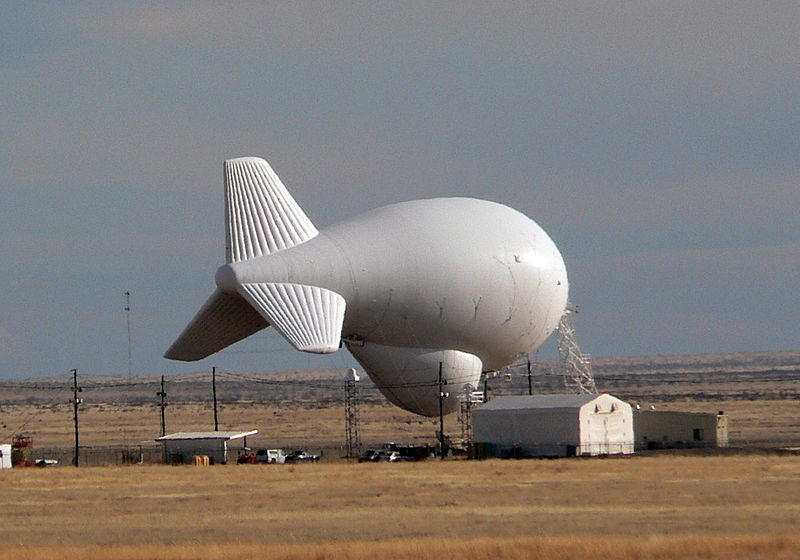
Big enough to dwarf a two-story warehouse
Marfa, Texas is most famous for it's "Mystery Lights" which appear in the sky, and have never been explained. But outside of the city, to the west, there is a sight which makes people do a double-take when they are driving along Hwy 90 and see it off to the side of the road. It is a very special blimp, of a type called a "tethered aerostat". It has been said to look like a "pregnant blimp".
This blimp is attached to the station by a 25,000 foot (7,600 m) long tether cord. It is raised at times to its full height in order to have a direct line of sight along the Texas-Mexico border. Among the instruments it carries is a radar.
The Tethered Aerostat Radar System, or TARS, is an aerostat-borne, surveillance program. Using the aerostat as a stationary airborne platform for a 360-degree surveillance radar, the system is capable of detecting low altitude aircraft at the radar's maximum range of hundreds of miles by seeing beyond the normal curvature of the earth and other terrain features.
The TARS system of such aerostats also provides a detection and monitoring capability along the United States-Mexico border, the Florida Straits, and a portion of the Caribbean in support of the Department of Defense Counterdrug Program. In addition to its counterdrug mission, it also supports North American Aerospace Defense Command's air sovereignty mission for the continental United States.
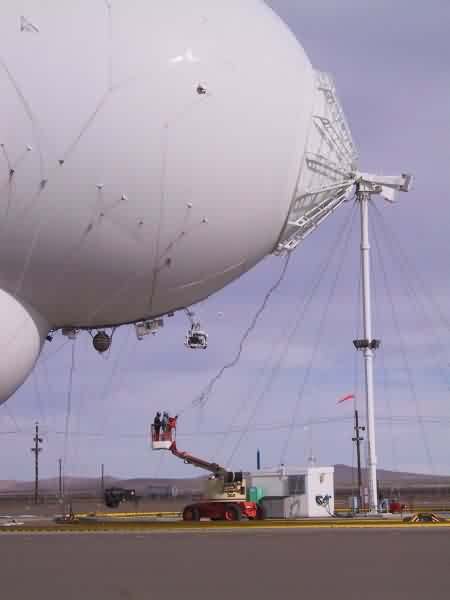
The nose holder and winch house
A TARS station consists of four major parts:
- the aerostat, itself, and its airborne support equipment which controls and protects it
- the radar equipment in its "belly"
- the tether and winch system
- the ground station.
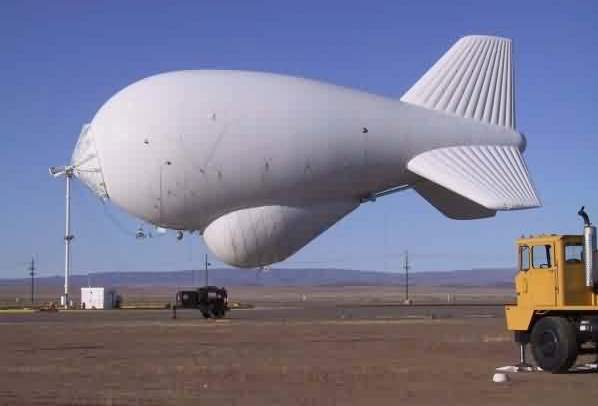
It is held in place by its nose
When parked, the aerostat is held in place by a tall tower with a "nose cup". It is simply reeled into the nose cup by the tether, which turns freely so that the aerostat can act like a weather vane to keep the strong West Texas winds from destroying it. When deployed, the normal operating altitude is approximately 12,000 feet above sea level, but can go as high as 15,000 feet. The extra 10,000 feet of cable is there because the wind may blow it a good distance sideways, adding to the length needed to gain the proper altitude.
The aerostat is 208.5 feet long and 69.5 feet in diameter with a fin span of 75.5 feet. These aerostats can rise up to 15,000 feet above sea level, while tethered by a single 1-inch diameter nylon and polyethylene cable which does not carry any of the radar information down to the ground. Such a data line would be too heavy and would weigh the aerostat down. Instead, the data is transmitted to the ground station then digitized and fed to the various users' control centers for display.
The ground station is where a flight director, seated before banks of meters and television screens, monitors the aerostat's performance. A doppler weather radar, wind profiler and ground weather station are installed at each site to support flight operations. Each site also obtains up-to-date forecasts and weather warnings from the Air Force Weather Agency.
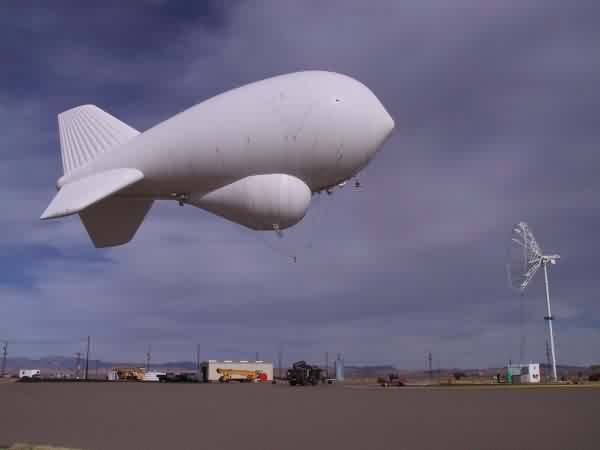
Being released to go to work
The aerostat hull is constructed of a lightweight, Tedlar fabric that weighs only eight ounces per yard. The fabric is resistant to environmental degradation, minimizes helium leakage, and provides structural strength
The upper chamber is filled with lighter-than-air helium, which makes it rise and stay aloft. The lower chamber is actually pressurized with air, like a balloon, but is called a "ballonet". A sophisticated system of sensors, blowers and valves controls the air pressure within the ballonet, maintaining the aerostat's shape and keeping the temperature and pressure constant for the radar system, inside. Because the aerostat is tethered to the ground, it stays in one place, so doesn't have a motor and doesn't use any fuel, except for a small generator in the "belly" which powers the equipment, with enough fuel (100 gallons) to power it for up to a week at a time.
It takes between 30 minutes and 2 hours to launch or recover the aerostat, depending on the urgency of the situation, the weather, and other consideratons.
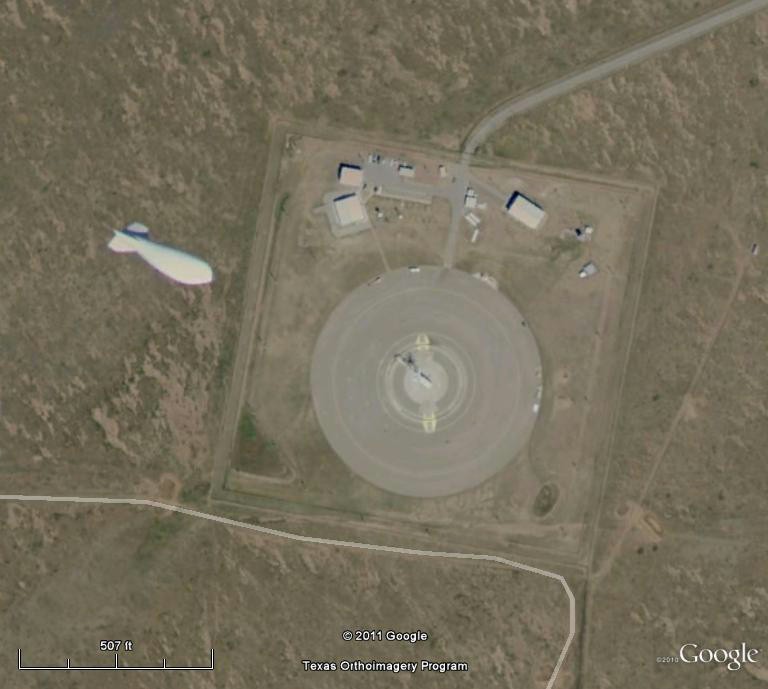
The TARS site in Marfa
For security and safety reasons, air space around Air Force aerostat sites is restricted for a radius of at least two to three statute miles and an altitude up to 15,000 feet. This action saved the U.S. government several million dollars in annual operations and maintenance costs.
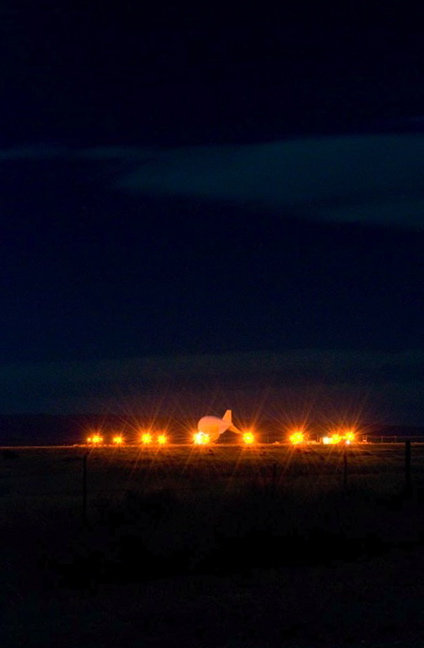
The Marfa TARS at night
Where does the “drug blimp” go at night? It sleeps out in the open, tied to its mooring, and weathervaneing in the wind.
FEEDBACK MAP
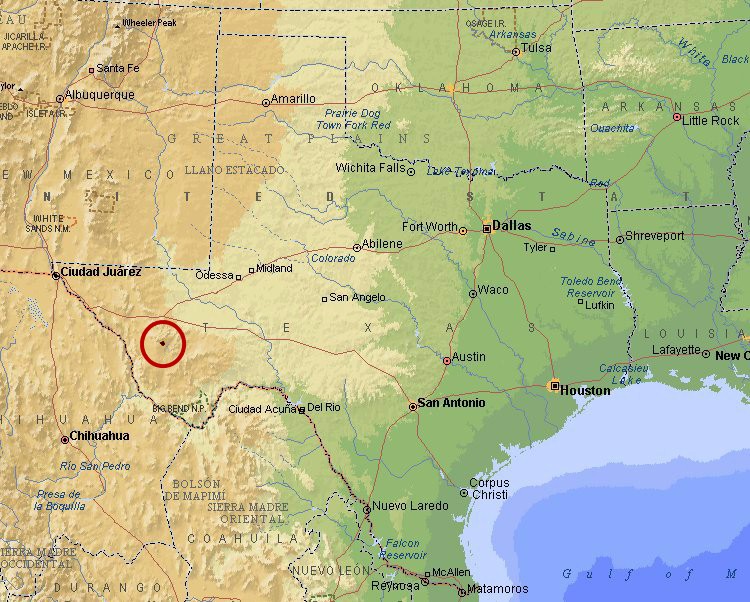
You can find a LOT more feedback information about the Marfa TARS installation at the following web sites:
U.S. Air Force web site
The Center for Land Use Interpretation
Wikimapia
WMD Around the World
Radomes.org
Wikipedia
Arthur Magazine